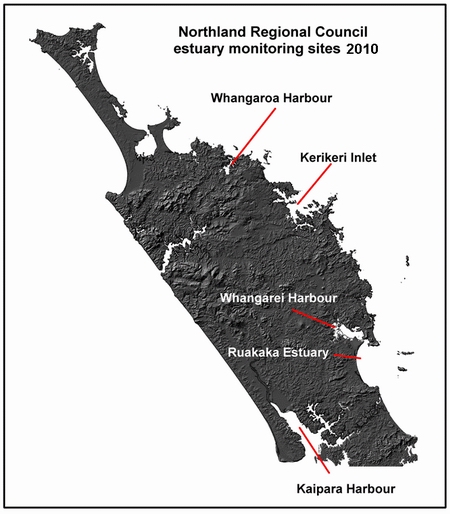Estuary Monitoring Programme
Northland's estuaries are important economic, social and cultural assets, with harbour and estuarine systems such as the Whāngārei Harbour and the Bay of Islands contributing significantly to Northland's economy and the environment.
Estuaries are particularly valued because they are very productive ecosystems that play important roles in the functioning of coastal environments. However, because estuaries and harbours are located at the end of the freshwater drainage system, they are vulnerable to land-based activities and processes that occur within their catchments. Sediments and chemicals often deposit in estuaries. As freshwater mixes with saltwater, fine silts and clays clump together – often with chemicals attached or absorbed – settle out of the water column.
Despite their importance to people and the environment, many of Northland's estuaries have been modified and impacted by human activity. Extensive vegetation clearance for agriculture and urban development has increased the amount of sediment, nutrient and metal contaminants that reach estuarine environments. Significant areas of saltmarsh and mangrove forest, which can act as natural filters, have also been drained for agriculture, urban development and infrastructure projects.
The Northland Regional Council has implemented an estuarine monitoring programme in order to:
· Assess the health of our estuaries and monitor change over time;
· Identify impacts from diffuse inputs and cumulative impacts of contaminants from human activity and development;
· Assess the effectiveness of Northland's regional plans and rules and enable informed decision-making by politicians and resources managers; and
· Inform the public and promote awareness of environmental issues impacting estuarine health.

Map of Estuary Monitoring Sites.
